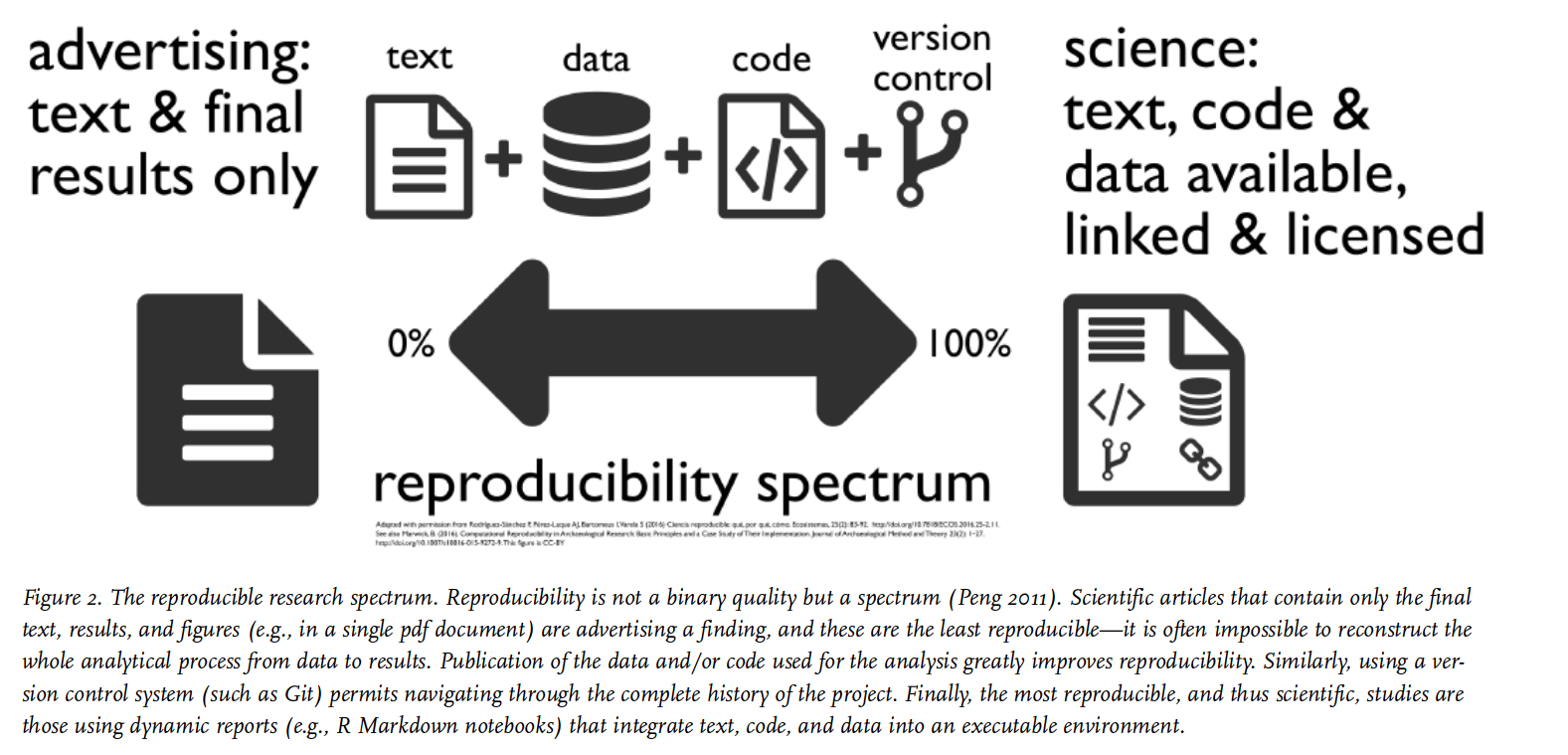Reproducibility
Reproducibility
- Allow other people to build up on your work…
For the findings of a study to be reproducible means that results obtained (…) in a statistical analysis of a data set should be achieved again with a high degree of reliability when the study is replicated.
https://en.wikipedia.org/wiki/Reproducibility

(Marwick et al. 2017; Marwick et al. 2018; https://faculty.washington.edu/bmarwick/)
In your article/thesis/project do:
- Deposit the data in a repository. Zenodo, Figshare etc.
see https://www.re3data.org/ - Include the data and code under an open and permissive license.
https://creativecommons.org/
https://choosealicense.com/ - Include the code for the analysis.
Document your analysis in an Rmarkdown document or in individual scripts. - Document what you are doing and what things mean, create rich metadata.
- Use version control systems (git).
https://github.com/git-guides
Guides
Kieran Healy
The Plain Person’s Guide to Plain Text Social Science
http://plain-text.co/
Ben Marwick
- Marwick, B. 2017: Computational Reproducibility in Archaeological Research: Basic Principles and a Case Study of Their Implementation. Journal of Archaeological Method and Theory 24(2): 424–450. DOI: 10.1007/s10816-015-9272-9.
- Marwick, B., Boettiger, C. and Mullen, L. 2018: Packaging Data Analytical Work Reproducibly Using R (and Friends). The American Statistician 72(1): 80–88. DOI: 10.1080/00031305.2017.1375986.
British Ecological Society
Guides to better science: guide on reproducible code and data management.

